Impact of Nursing-Sensitive Quality Indicators on Patient Safety
VerifiedAdded on 2022/12/30
|11
|795
|93
Report
AI Summary
This report examines the critical role of nursing-sensitive quality indicators (QIs) in healthcare, specifically focusing on the control of nosocomial infections and the promotion of patient safety. It introduces the National Database of Nursing Quality Indicators (NDNQI) and its significance in monitoring and improving healthcare quality. The report justifies the selection of the 'Controlling rate of nosocomial infection and promoting patient safety' QI, highlighting its direct impact on patient safety and positive outcomes. It emphasizes the need for nurses to be familiar with QIs to adhere to infection control guidelines, including proper hand hygiene and personal protective equipment (PPE) usage. The report also details how organizations collect and disseminate data on QIs, referencing sources like the CDC and the WHO. Finally, it underscores the vital role of nurses in promoting positive outcomes through improved adherence to infection control protocols, ultimately enhancing patient safety and care.
1 out of 11
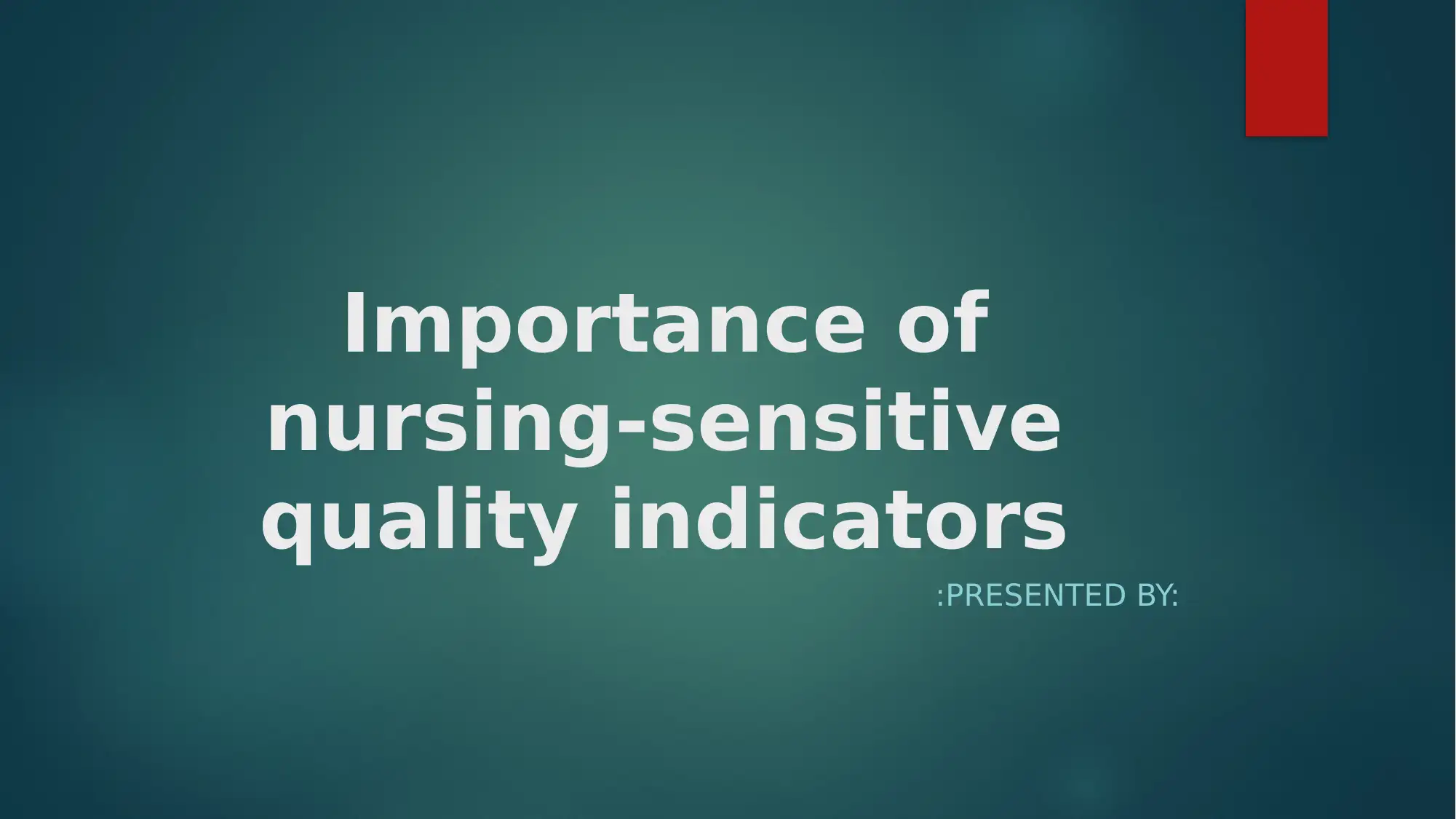
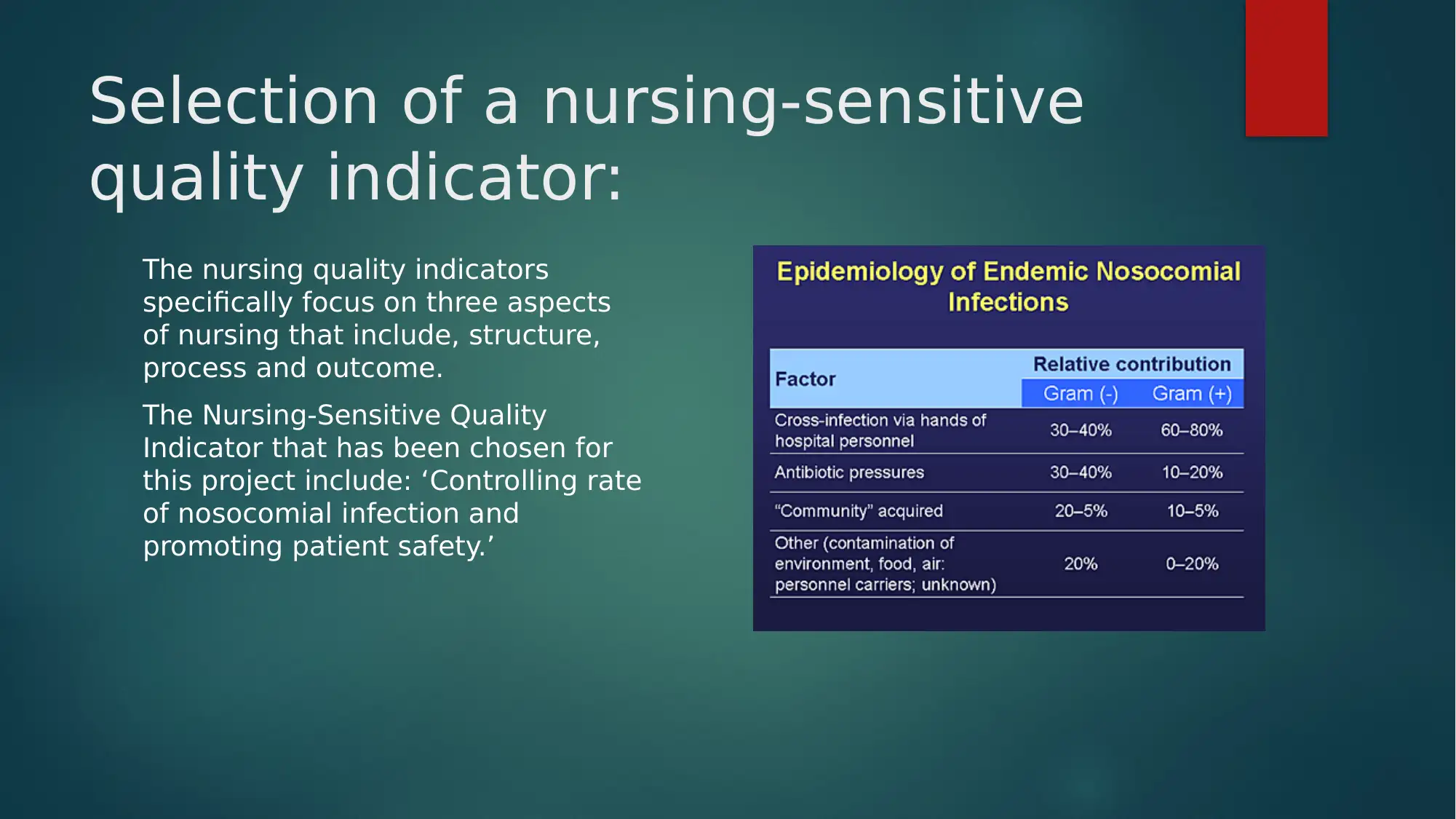
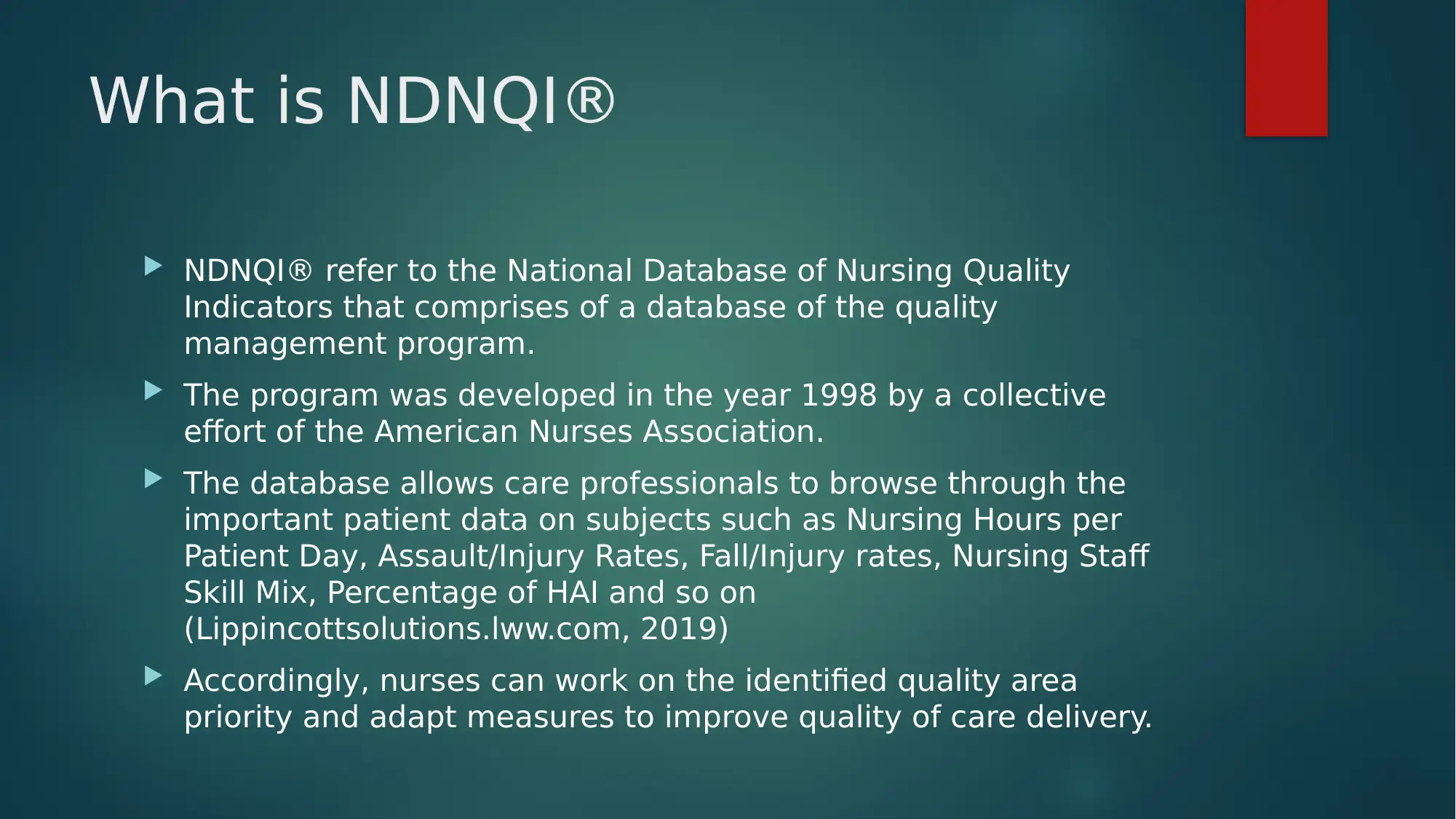

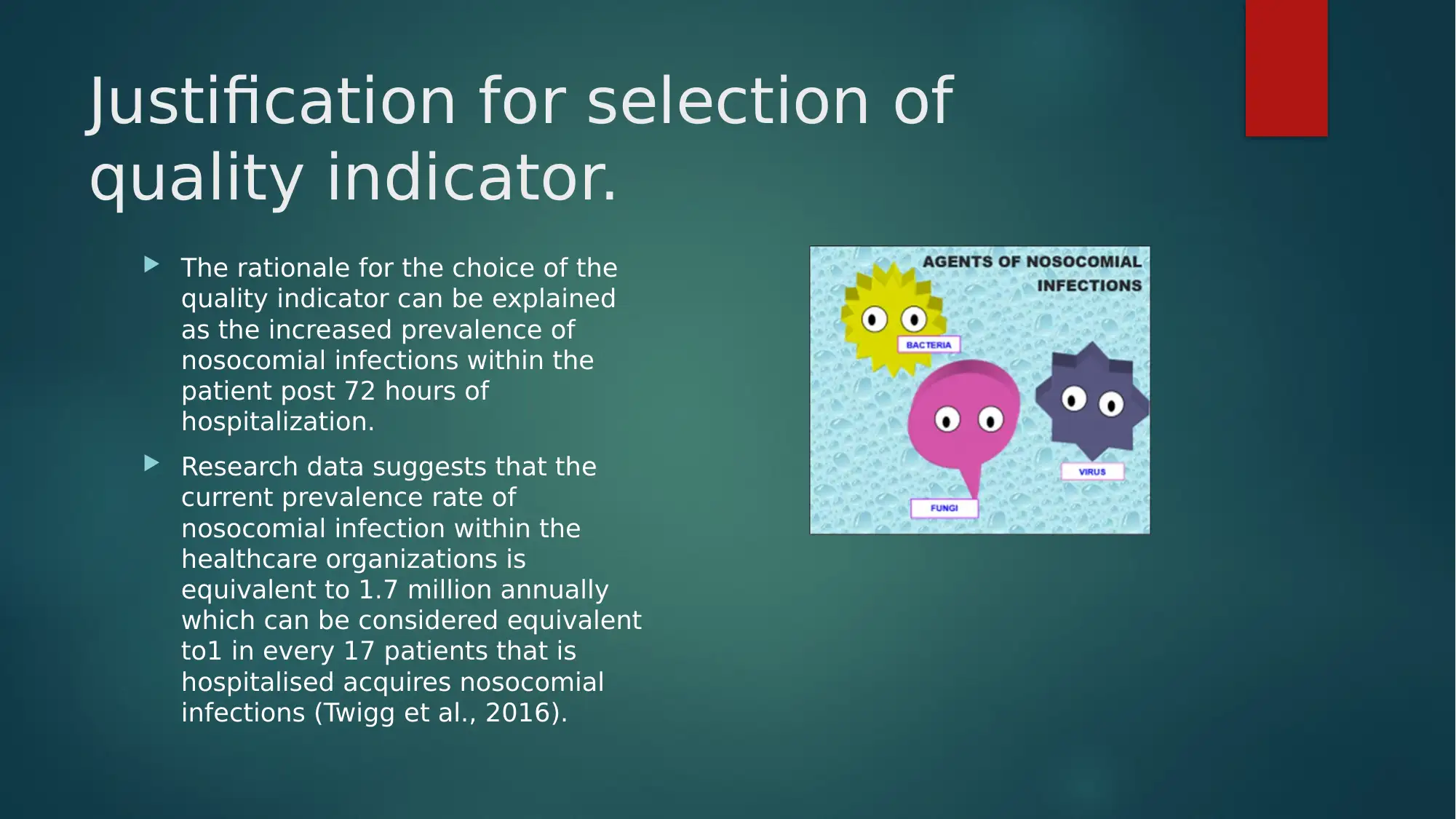
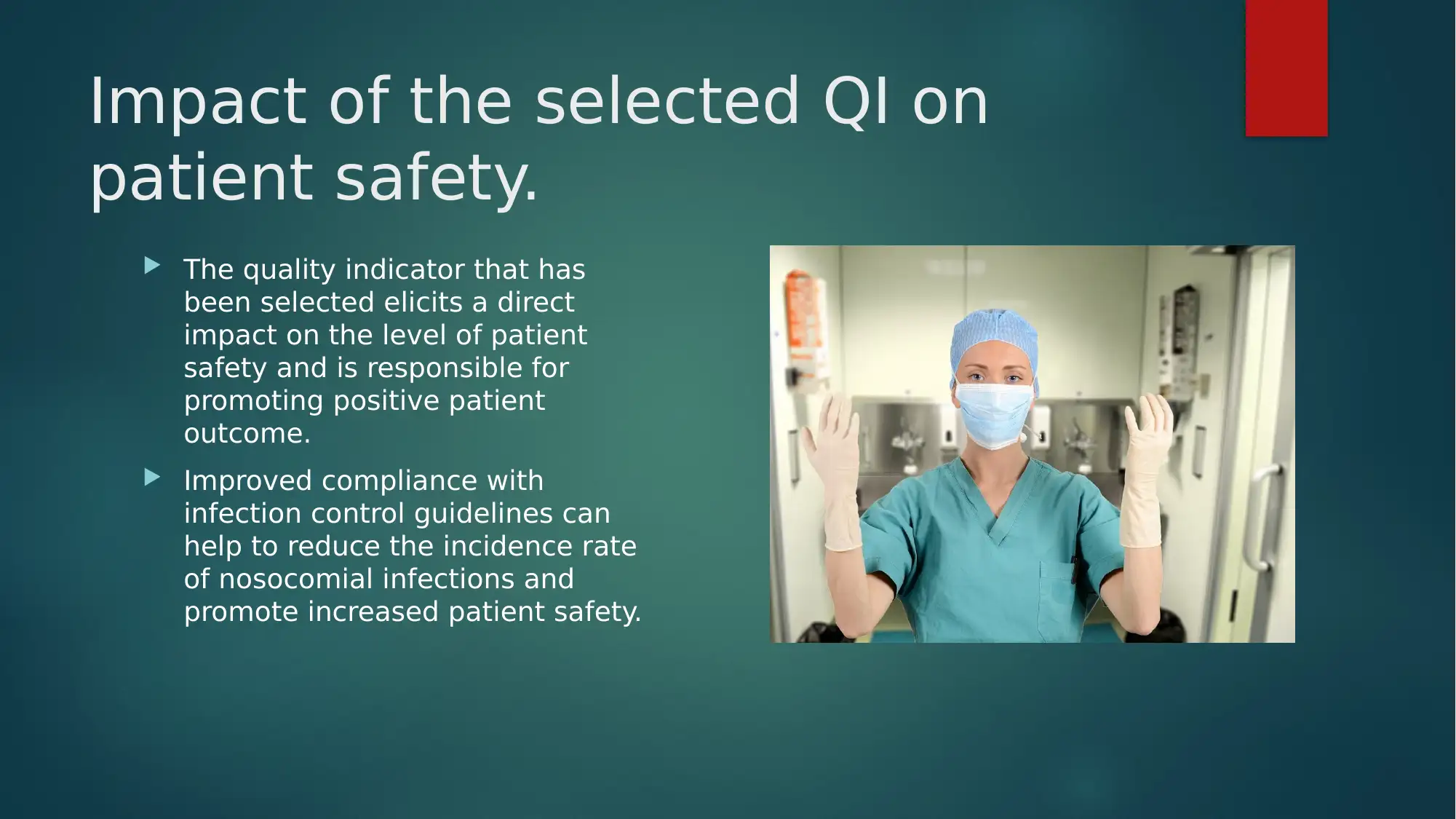
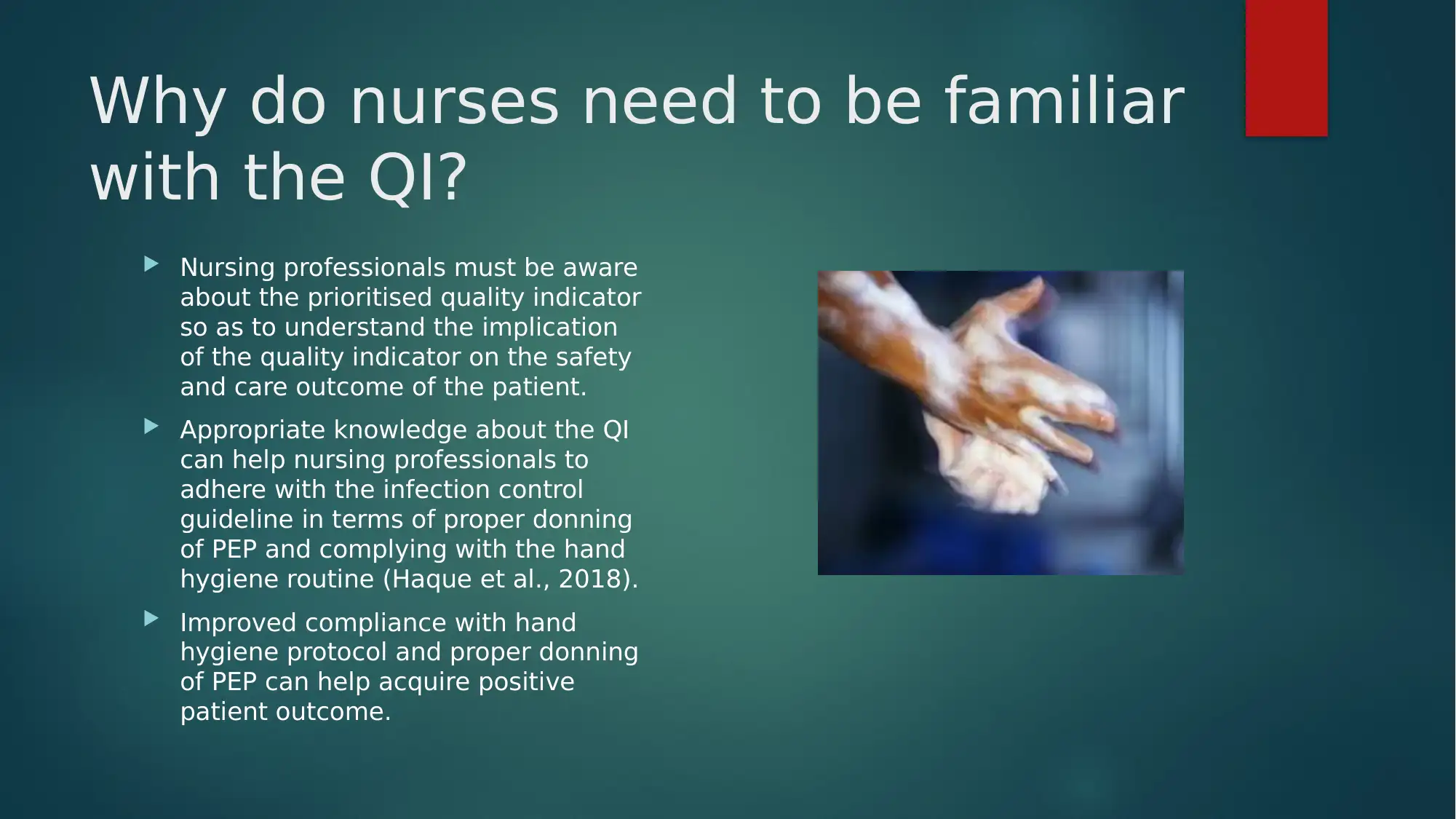
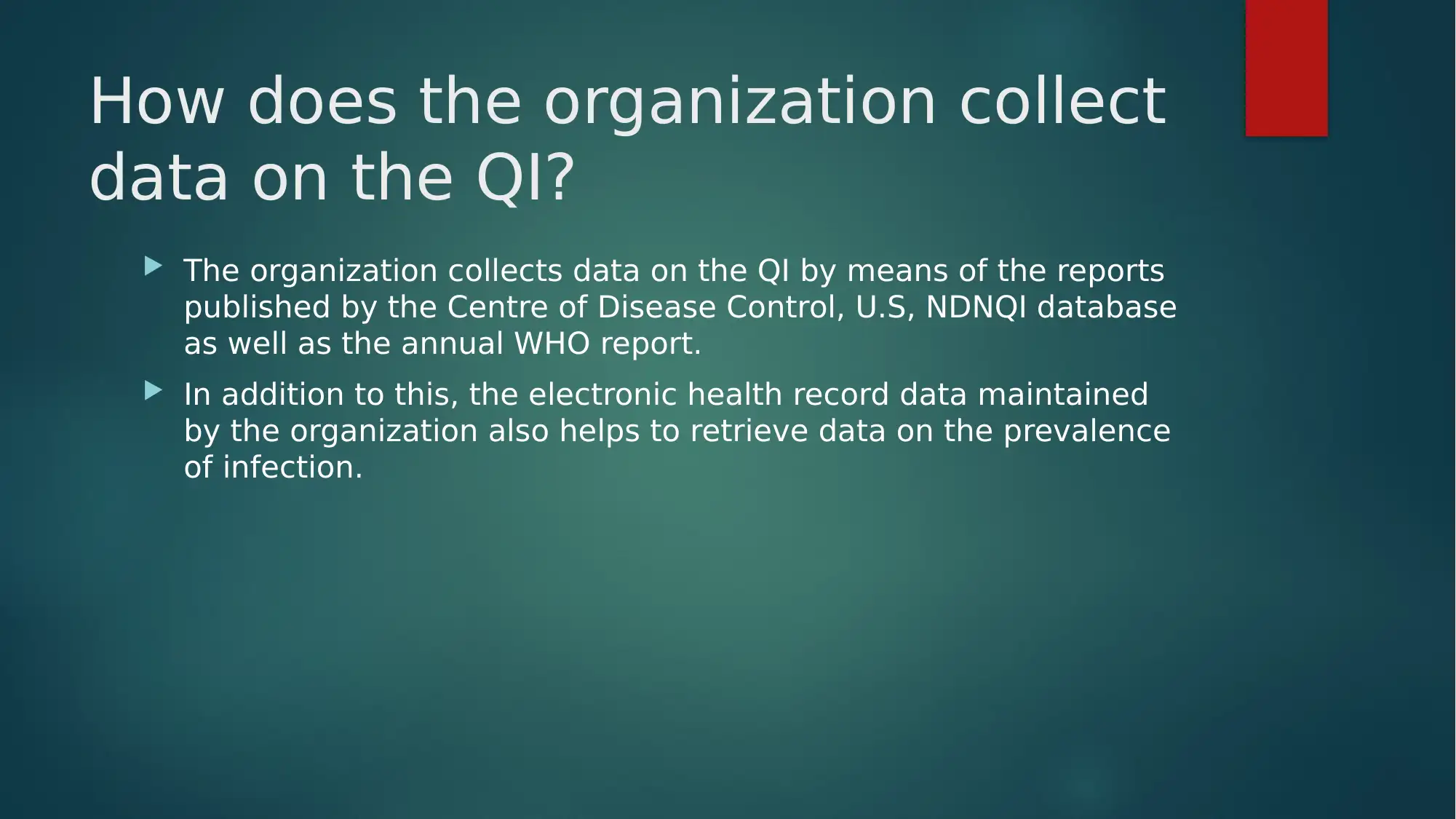
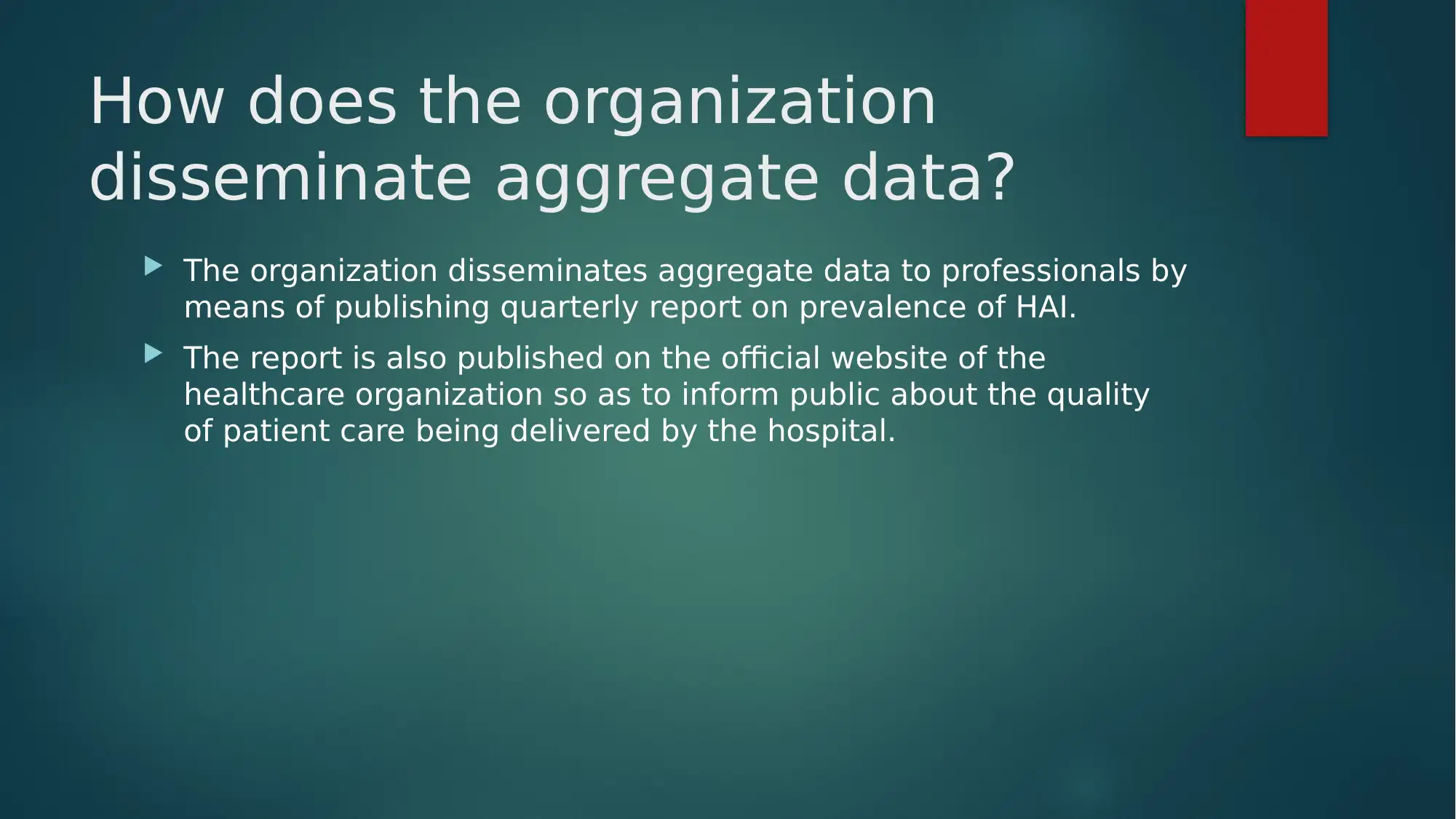

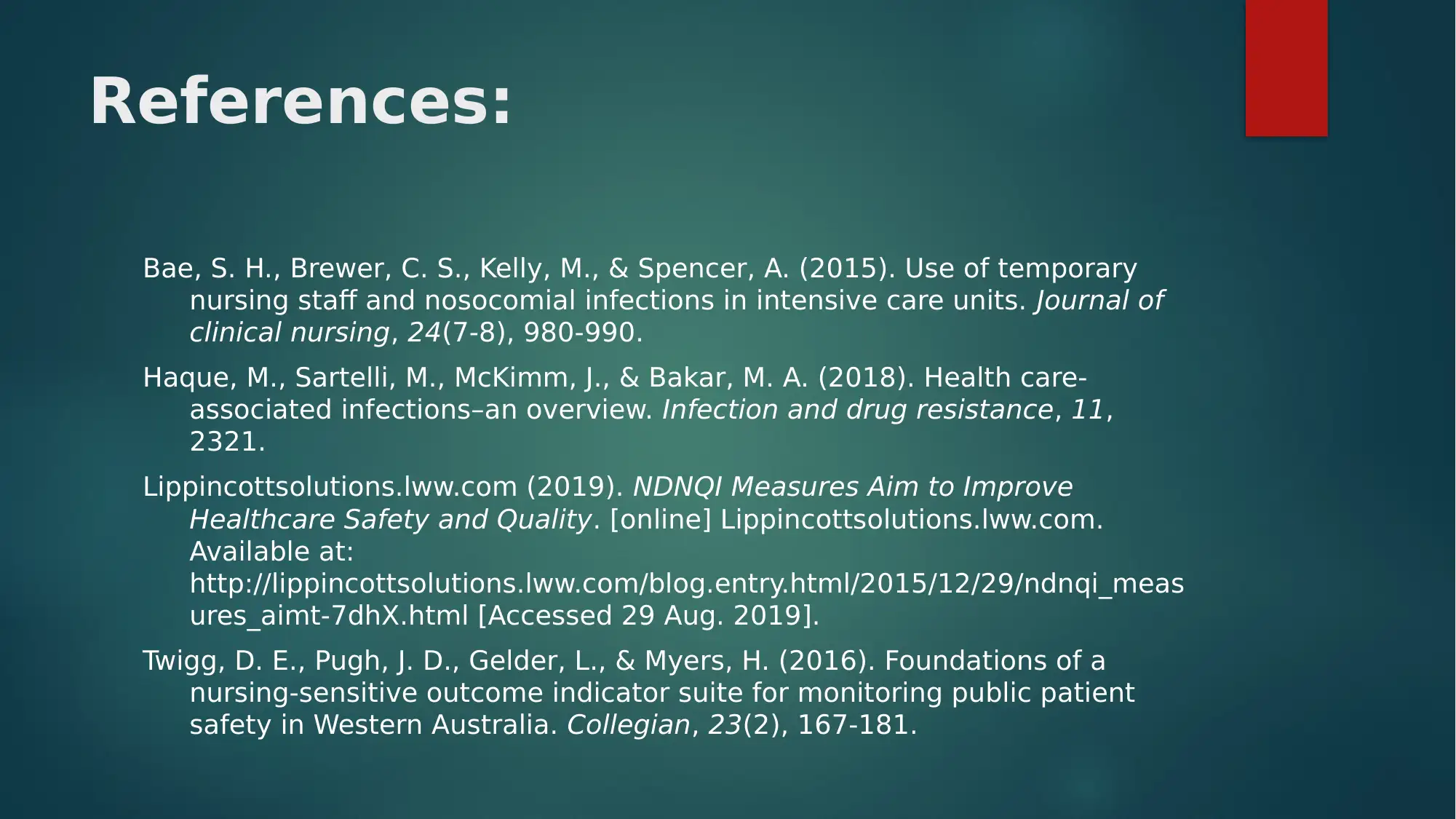






![[object Object]](/_next/static/media/star-bottom.7253800d.svg)